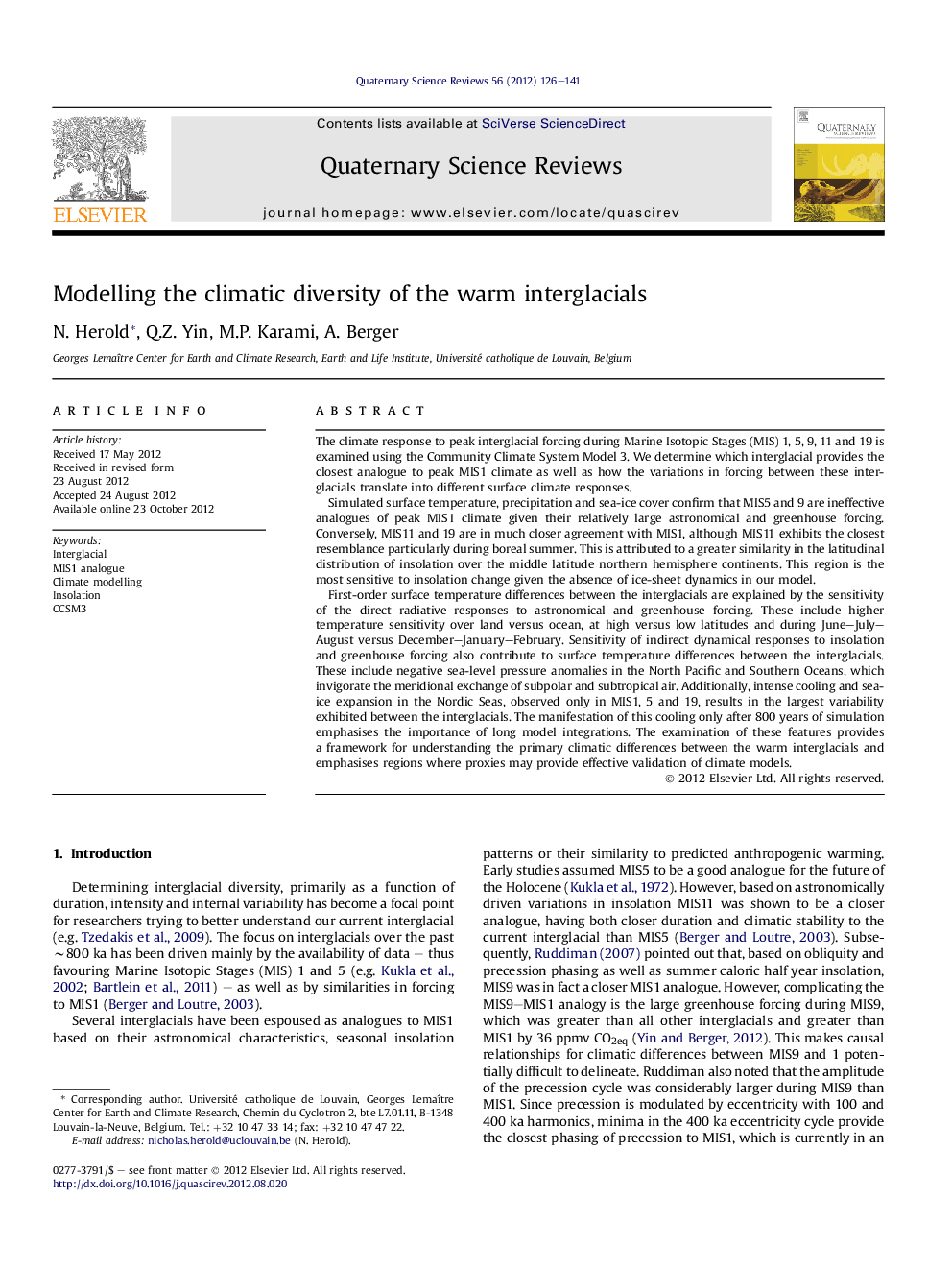| کد مقاله | کد نشریه | سال انتشار | مقاله انگلیسی | نسخه تمام متن |
|---|---|---|---|---|
| 4737115 | 1640878 | 2012 | 16 صفحه PDF | دانلود رایگان |

The climate response to peak interglacial forcing during Marine Isotopic Stages (MIS) 1, 5, 9, 11 and 19 is examined using the Community Climate System Model 3. We determine which interglacial provides the closest analogue to peak MIS1 climate as well as how the variations in forcing between these interglacials translate into different surface climate responses.Simulated surface temperature, precipitation and sea-ice cover confirm that MIS5 and 9 are ineffective analogues of peak MIS1 climate given their relatively large astronomical and greenhouse forcing. Conversely, MIS11 and 19 are in much closer agreement with MIS1, although MIS11 exhibits the closest resemblance particularly during boreal summer. This is attributed to a greater similarity in the latitudinal distribution of insolation over the middle latitude northern hemisphere continents. This region is the most sensitive to insolation change given the absence of ice-sheet dynamics in our model.First-order surface temperature differences between the interglacials are explained by the sensitivity of the direct radiative responses to astronomical and greenhouse forcing. These include higher temperature sensitivity over land versus ocean, at high versus low latitudes and during June–July–August versus December–January–February. Sensitivity of indirect dynamical responses to insolation and greenhouse forcing also contribute to surface temperature differences between the interglacials. These include negative sea-level pressure anomalies in the North Pacific and Southern Oceans, which invigorate the meridional exchange of subpolar and subtropical air. Additionally, intense cooling and sea-ice expansion in the Nordic Seas, observed only in MIS1, 5 and 19, results in the largest variability exhibited between the interglacials. The manifestation of this cooling only after 800 years of simulation emphasises the importance of long model integrations. The examination of these features provides a framework for understanding the primary climatic differences between the warm interglacials and emphasises regions where proxies may provide effective validation of climate models.
► Marine Isotopic Stages (MIS) 1, 5, 9, 11 and 19 simulated with the CCSM3.
► Large temperature differences at winter sea-ice margins.
► Large temperature differences over continents during June–July–August.
► Insolation over northern hemisphere land critical in models without dynamic ice-sheets.
► MIS11 and 19 are closer climatic analogues to MIS1 than MIS5 or 9.
Journal: Quaternary Science Reviews - Volume 56, 21 November 2012, Pages 126–141